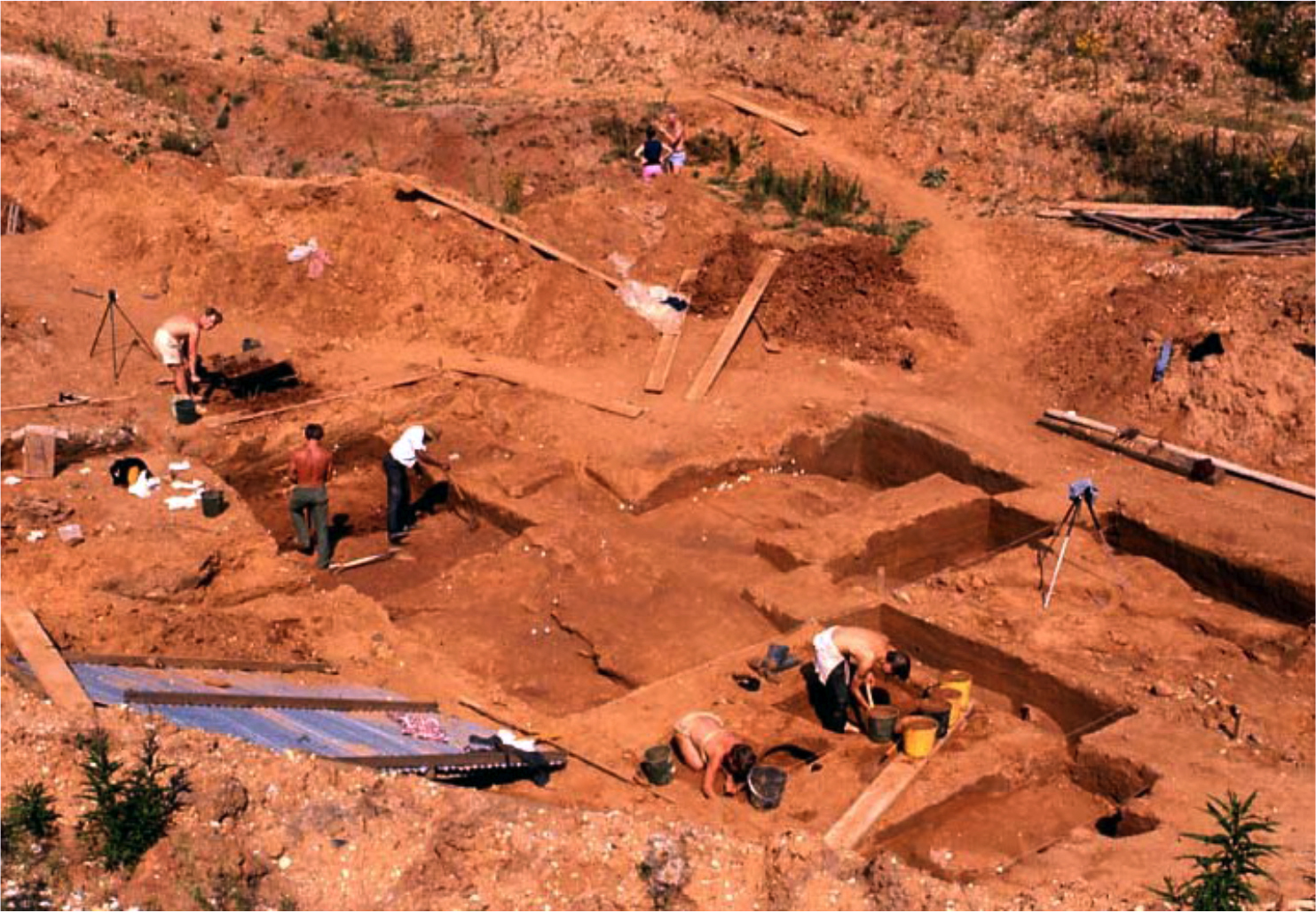
There have been investigations at High Lodge since the 1860s with various interpretations of the sequence (Whittaker et al. 1891; Marr 1921; Ashton et al. 1992). Fieldwork in the 1960s recovered the principle archaeological assemblage together with much of the biological data from the site and further investigations in 1988 established the current understanding of the geological and environmental succession. The oldest sediments at the site consist of clayey-silts laid down as overbank sediments from the Bytham river. These sediments were subject to subglacial deformation and transport, resulting in their emplacement above younger Anglian till (Lewis 1992). These are overlain by glacial sands and gravels. The glacial sediments are attributed to the Anglian glaciation of MIS 12 age, implying that the clayey silts are MIS 13 or older. A pre-Anglian age is supported by the remains of Stephanorhinus hundsheimensis (Stuart 1992). The clayey silts preserve pollen, insects with occasional wood and vertebrate remains (Coope 1992; Hunt 1992). The fauna and flora indicate a cool climate with vegetation dominated by pine and spruce together with juniper and heathland plants. The floodplain contained pools and marshland with seasonal flooding from the nearby river.
Over 1,200 fresh flint artefacts were recovered from the clayey silts, consisting of flakes, scrapers, notches and cores, but no evidence of handaxe manufacture (Ashton 1992). The unusually fine manufacture of the scrapers led earlier workers to interpret the site as Mousterian, but the arly dating precludes this interpretation. Handaxes were found in secondary context in the overlying glacial sands. Their fresh condition suggests that they were derived from underlying sediments nearby, potentially the same overbank sediments that contain the flake tool assemblage, but perhaps from a different location on the floodplain.
Excavated assemblages 1962-1968
|
Glacial sands and gravels |
Clayey Silts |
Handaxes/roughouts |
14 |
0 |
Flake tools |
15 |
69 |
Cores |
13 |
52 |
Soft hammer flakes |
7? |
1? |
Hard hammer flakes |
377 |
983 |
|

